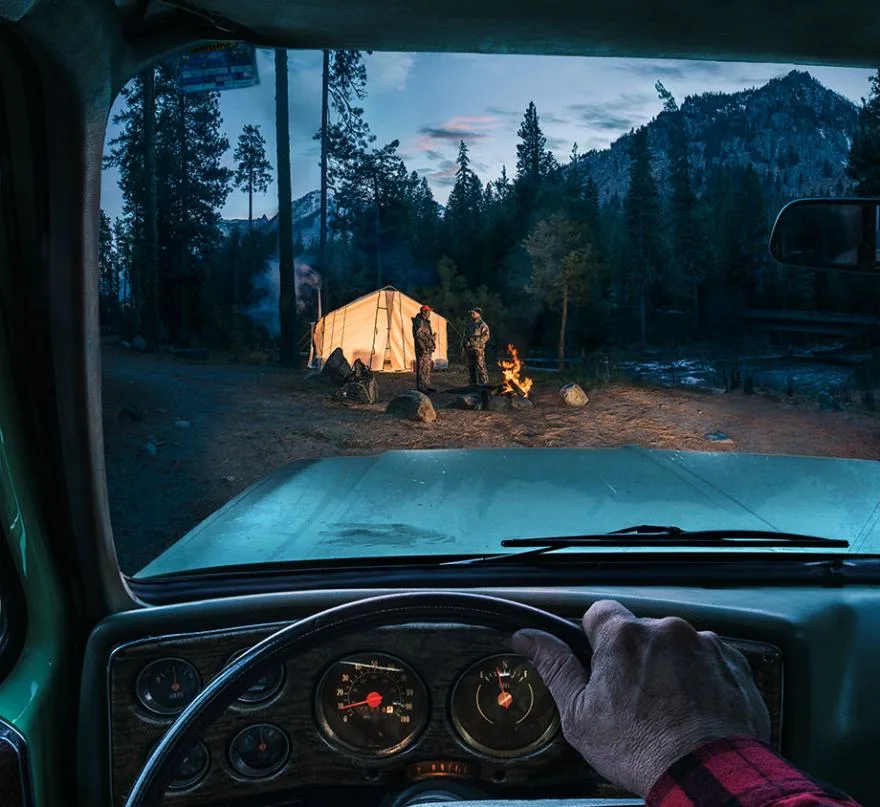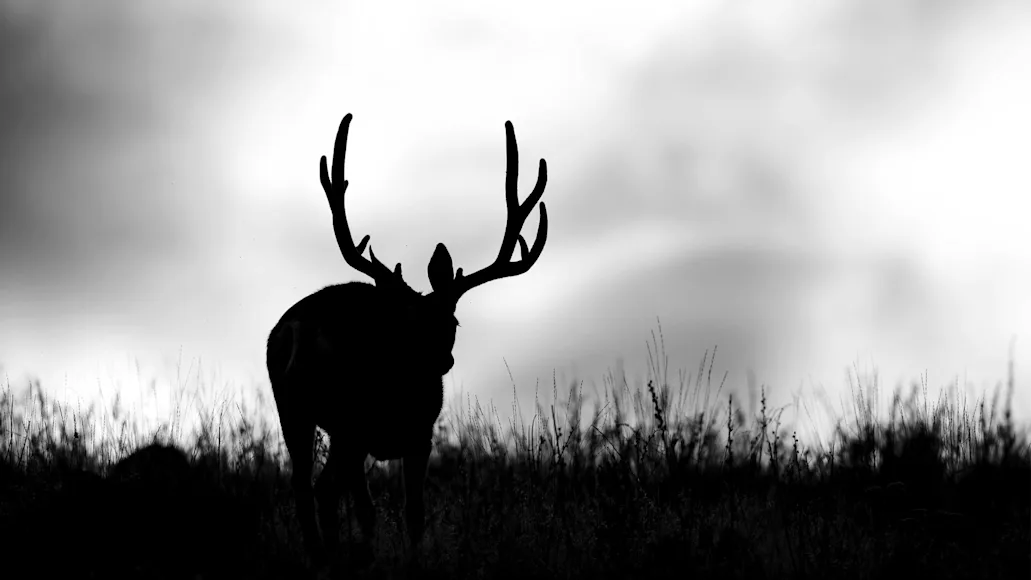Editor’s Note: People tell stories at every hunting camp. At the F&S hunting camp, which you’ve just stepped into (put your feet up), all we do is tell stories. And we do it whether it’s hunting season or not.
So, get comfortable. From today through Sunday, we are bringing you a series called A Week In Hunting Camp_—seven stories in total, each one about a single day (or night) in camp, featuring both original works and a few modern classics from the archives
._
Hunting seasons are winding down for many of us, and we’re staring at a long stretch of just trying to stay warm. Think of it as coming home from the field and stepping into a cozy hunting camp—our hunting camp, where one of F&S’s best writers is telling a story.
First up, the late, great Tom McIntyre.
Learn how to upgrade your membership plan and get the new print magazine!
Day One: The Mule Deer Highway

When you pull into camp, you leave everything else behind. Photo illustration by Nick Hall
At the top of Mountain Pass, the glare in the rearview was like the afterglow of a device gone off in a long-overdue airburst above the coastal city. Then the interstate descended the Nevada side of the Clarks, leaving the Joshua trees behind; and the glare sank away, the highway flattening out and running straight as a ballasted railroad across the dry lake bed, the desert air growing slaty with the dusk progressing toward night. At last light, in the next lane, was another pickup with a camper top or a load in the back lashed under a tarp. A Jeep CJ crammed with gear, jerry cans on the rear and a rifle rack mounted inside, came up and slung past. As the headlights came on, the traffic buttons glowing like cats’ eyes, the lights of Las Vegas mounted ahead.
It was like the Dust Bowl exodus in reverse, two generations later. The real Californians, the ones with roots going back before the war and the displaced sharecroppers’ westward migrations, had their places to hunt in California. For the rest, in their tens of thousands, the way to the deer was a matter of returning the way they came, at least as far as Utah, Colorado, and Wyoming. And everyone went through Las Vegas.
I was one of those Californians with multigenerational roots; but my people were not hunting people, and there was no ranch or mountain cabin. I heard the Colorado hunting stories, though, told by my father’s friends, and I wanted to travel with them to hunt.
This, then, was my first journey on the mule deer
highway. Although I didn’t know it, I would follow it almost without interruption for 15 years.
By dawn we would be driving the trucks across the Utah-Colorado line. In Grand Junction, we’d take rooms, buy our licenses and supplies, sleep overnight, and the next morning be working our way upward through the axle-deep mud left in the shaded draws by early snows to churn out onto Skinner Ridge. Among the Gambel oaks and piñons and mountain mahogany was the campsite the older men had used throughout the ’60s, and that was where we pitched the surplus pyramid tent for cooking and the wall tent for sleeping.
Into the wall tent we would bring the folding beds and sleeping bags. The tables, worn and whittled on, would be set up in the pyramid tent, and then the pots and pans, knives and forks, cups and plates, in the old U.S. mailbag, went in, along with the Coleman stove. Boxes of groceries followed, and it would already be time to start sorting through them for dinner: thick steaks, fried potatoes, salad with the inevitability of Italian dressing.
The lanterns would be lit and we would eat. After the meal there would be the washing, while for some there would be gin playing, and for others, vodka drinking, a Bloody Mary with tomato juice, or a red beer. On the table would be the radio with the AM and FM and shortwave bands. We would try to tune in the news or a game, then listen until the station faded away, before extinguishing the lanterns and going to sleep.
The stars would be out in the morning in abundant acuity; and the sun, coming up over where the ridge bluffed out, would find me still-hunting into the wind along a trail. On this trail, or another in a different side canyon running off the ridge, the memory vague now, I would jump and kill my first mule deer buck, no more than a forkhorn, then hurry to find one of the older men to show me how to field dress a deer, and to help me drag it back up the trail to where we could lift it into a truck.
In the afternoon, with the tagged and dressed buck hanging in a tree by its rack and October light cascading through the yellow leaves onto the stained canvas, the music or the news report on the big radio would be interrupted by the Buckskin Network, relaying emergency messages to the hunters scattered across the ridges and mountains. Phone home, the messages said, and you felt for the ones whose names were read, not just for what might be waiting on the other end of the line, but for having to come off the hunt, to leave the real buckskin network of hunters.
All that lay ahead, though, as did the older men growing into old ones, and their trips on the highway concluding. Then I would have to find other places to hunt my deer, and others to hunt them with. Now it was about driving through Vegas, registering under the incandescence of downtown at the Golden Nugget—where they held a contest for the biggest buck—before eating the prime-rib special and topping off the tanks.
The city lights would be behind us as we drove away from Las Vegas. And the headlights of the trucks would assemble with us in the sable night as we were bound for what we desired, what we could not seem to locate in California. —Thomas McIntyre





